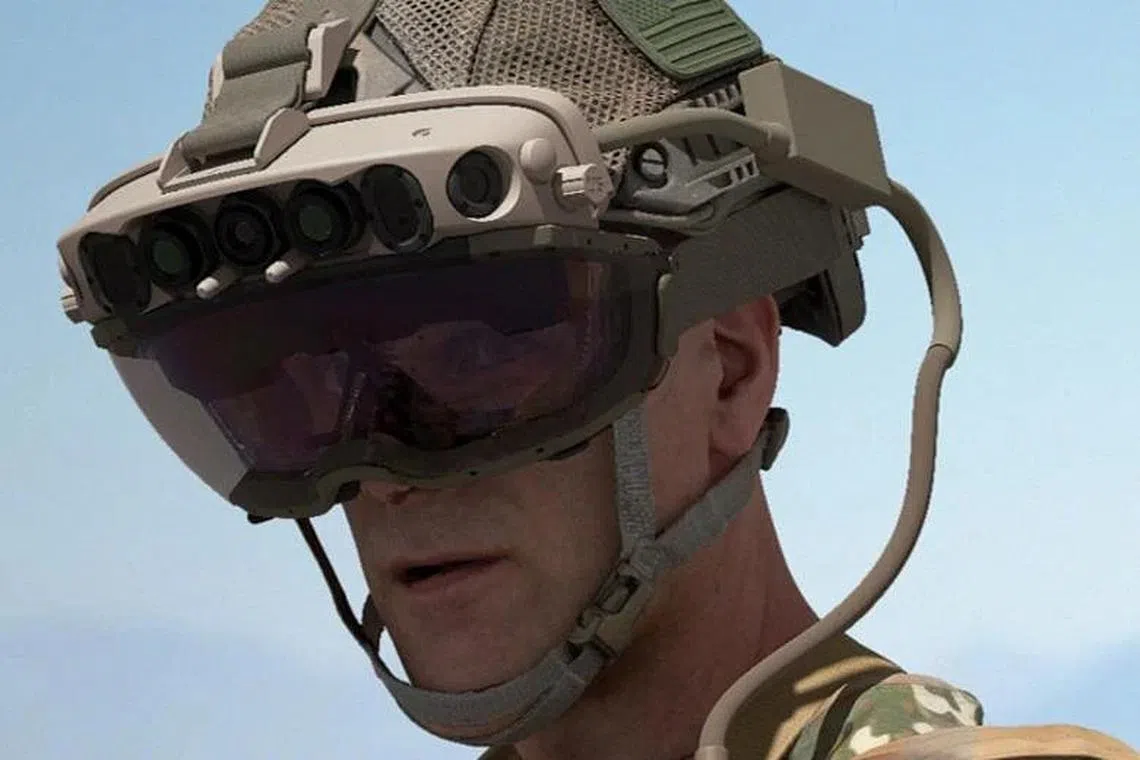Microsoft goggles for US Army delayed for at least 2 years
Sign up now: Get ST's newsletters delivered to your inbox

The latest goggles is slimmer and lighter and designed “to greatly improve soldier comfort".
PHOTO: MICROSOFT
Follow topic:
NEW YORK – An improved model of Microsoft Corp’s goggles would not be deployed to United States Army combat troops for at least two years because the company must first demonstrate it has fixed flaws that left soldiers with headaches, nausea and eye strain, according to the Army.
If the goggles passes its tests, a version will be fielded starting in July 2025, the Army said in a statement.
The latest version is slimmer and lighter and is designed “to greatly improve soldier comfort”, Microsoft said in a statement.
Software improvements are also intended to result in greater reliability and reduced power demand.
Microsoft’s Integrated Visual Augmentation System, or IVAS, is expected to provide a “heads-up display” for US ground forces, similar to that for fighter pilots.
It is based on the company’s HoloLens “mixed reality” goggles.
A decision to deploy the military version would unlock billions of dollars for procurement that Congress has become unwilling to free up pending proof of improvements.
Over a decade, the Army projects spending as much as US$21.9 billion (S$29 billion) for as many as 121,000 devices, spares and support services if all options are exercised.
It has already accepted 5,000 early version goggles, with another 5,000 of the next version pending.
The first 20 improved goggles, assembled by hand, are to be delivered between July and September, with initial assessments by soldiers soon after, the Army said.
The stakes for Microsoft and the Army were highlighted on Wednesday during a House Armed Services subcommittee hearing on Army procurement, with the panel chairman sceptical about the US$1.5 billion spent so far.
“I am particularly concerned about a product that would cost over US$60,000 per soldier” and “think the system needs to be carefully scrutinised to ensure soldier lethality is enhanced”, Representative Rob Wittman, a Virginia Republican and the subcommittee chairman, said in a statement.
Army weapons buyer Doug Bush, in a prepared statement, said the service and Microsoft have “identified solutions to address these areas through refinements driven by soldiers’” input as the Army intends to field the updated “IVAS 1.2” model to combat force as early as July 2025.
According to the Army’s detailed schedule, the goggles will go through a gauntlet: The first 20 hand-built improved models will be delivered starting in July to support the first soldier-assessment between October and December.
If initial assessment is a success, the Army will award another contract to produce additional devices for a second soldier-evaluation between July-September 2024.
A successful event there would be followed by a full-blown combat operational test between April and June 2025. If this graduation test is successful, the goggles would be fielded to combat units in months.
Mr Bush, on April 19, told a Senate Armed Services panel that “we are taking a deliberate approach” to evaluating and buying more goggles. With the initial models that tested poorly, the service “was, honestly, very, very aggressive on timeline and production ramp up”.
“We want to make sure” the latest version is “exactly what the army needs, or we’re not going to produce it”, Mr Bush said.
Microsoft said in a statement that “we continue to partner very closely with the Army along all stages of IVAS development”. BLOOMBERG

